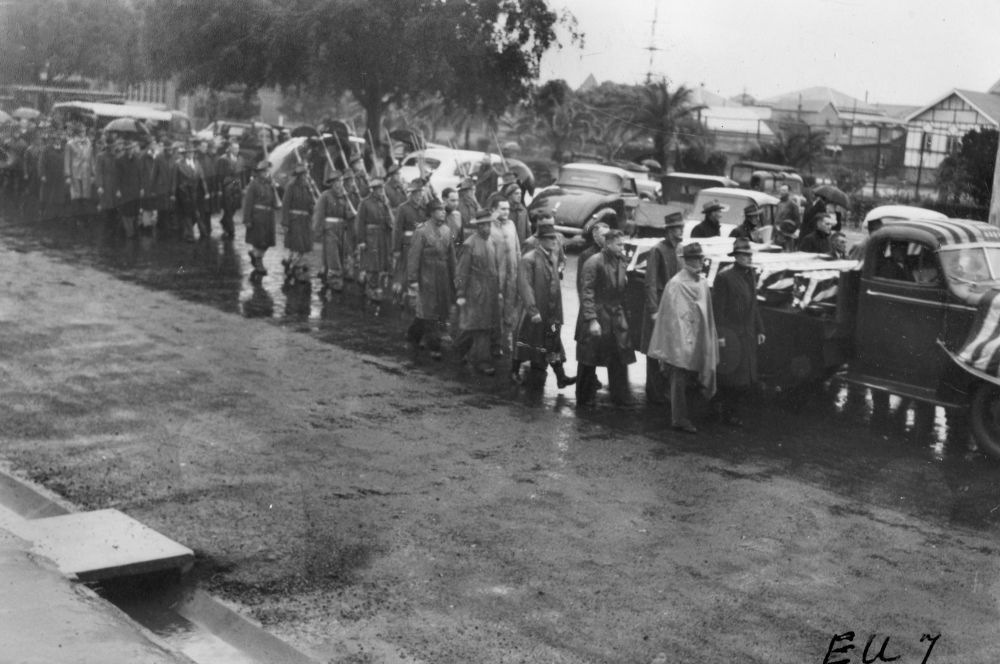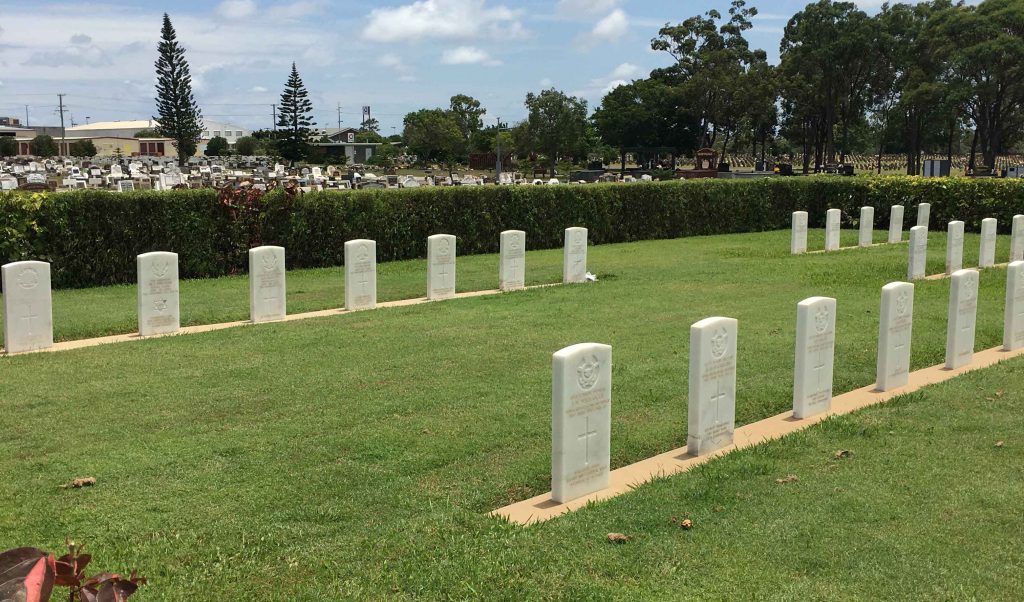
In 1948 Bundaberg honoured soldiers lost in a wartime plane crash with a funeral procession and burial, attracting letters of appreciation from the Australian and United States air forces.
Letters to Bundaberg Mayor of the day Alderman F.H. Buss recently rediscovered in Council’s historic archives reveal the gratitude for the service following the tragic discovery made five years after the plane was lost on 21 November 1943.
According to the Bureau of Aircraft Accidents Archives the soldiers were travelling on a Douglas C-47 Skytrain, christened ‘Star Duster’, and were on their way to Brisbane after collecting mail in Rockhampton.
“On the last leg to Brisbane, while cruising west of Monto, the crew encountered poor weather conditions and lost control of the aircraft that crashed in a canyon,” the Bureau of Aircraft Accidents Archives report reads.
“As the aircraft was declared missing, SAR operations were conducted but eventually suspended [a] few days later as no trace of the aircraft nor the crew was found.”
The State Library of Queensland said the twin engine United States Douglas Dakota transport plane had disappeared without a trace until a discovery was made in June 1948.
“… a farmer found the wreckage in a gully on Magpie Station at Yarrol, in the Monto district of Queensland,” the State Library said.
“The plane was carrying 4 American crewmen, 2 American military passengers and 7 Australian military passengers.”
Other parts of the wreckage would remain undiscovered for decades including the right wing which was found in 1961, about one km from the main wreckage, and other debris such as a door and stabilizer which were found in 1991.
Australia @ War has published a military document relating to the crash found in NARA records, dated 29 June 1948.
“The starboard motor was located 300 to 400 yards from the main wreckage, as no damage to trees was evident it appears that this motor came adrift in mid-air,” the report said.
While the crash victims were unable to be identified, a moving historical image of the funeral procession held in July 1948 shows the reverence and respect with which they were treated by the Bundaberg community.
The procession moved through the town area before the soldiers were laid to rest in the Bundaberg War Cemetery.

These actions were greatly appreciated by Australian and American defence personnel who wrote to Council to express their thanks.
A letter was received on 29 July 1948 from Casualty Section, Department of Air, Albert Park Barracks Secretary M.C. Langslow on behalf of the Royal Australian Air Force.
“With reference to the finding of the wreckage of a crashed Douglas aircraft at Monto and to the burial of the unidentified members of the crew and passengers at Bundaberg War Cemetery on the 5th July, 1948, my Department desires to express appreciation to you and the people of Bundaberg for their co-operation with the members of the Royal Australian Air Force with regard to the burial arrangements,” the letter said.
“It is pleasing to note, from a report submitted by the Officer-in-Charge of the R.A.A.F. Searcher Party, Squadron leader K.M. Rundle, the tribute he has paid to the assistance and co-operation afforded to him by you and other members of the Council and it is desired to say that such action greatly facilitates the unfortunate task of the Royal Australian Air Force in recovering and burying members who lost their lives on war service.”
On the same day a letter was received from Lt Colonel Ralph L Michaels from the Office of the United States Air Attache.
“The United States Air Force and the Embassy of the United State in Australia wish to take this opportunity to express their sincere and grateful thanks for your willing help and cooperation in connection with the recently discovered air crash near Monto, Queensland,” Lt Colonel Michaels said.
“The outstanding cooperation received from the citizens of Bundaberg through your office deserves the heartfelt appreciation felt by the American Government and its people.
“Your kindness will not be forgotten either by the next of kin or the United States Air Force.”
The grave sites are maintained within the Bundaberg Cemetery on Takalvan Street by War Graves Australia.
Historical Council archives are being digitised as part of an ongoing project to preserve the region’s heritage.




